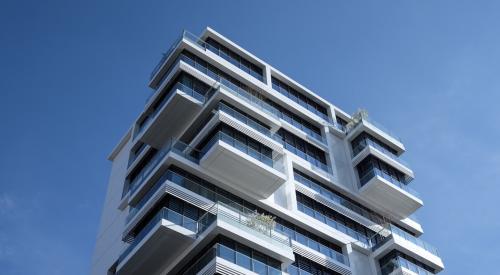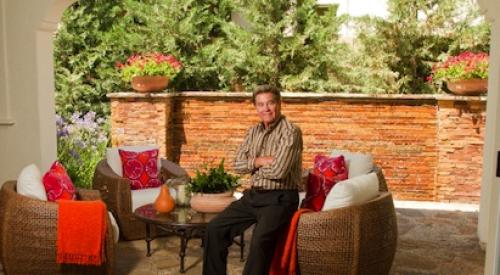Psychographic market research adds a powerful weapon in the arsenal of new home marketers. The approach breaks through monolithic buckets of demography - age, income, sex and marital status - with questions designed to uncover closely held beliefs. These yield a trove of details about personal values that ultimately support the new home purchase decisions of millions of Americans.
A leading-edge figure in the field of psychographics, Brooke Warrick, president of American Lives in Oakland, Calif., specializes in understanding the values of home buyers. His firm conducts research for developers and builders across the nation. Below, Warrick offers profiles of the five basic values-based psychographic groups, clues to help your staff pick them out of a crowd and their home design inclinations.
| Above all else, the six- bedroom, 3,305-square-foot Sapphire model by Diamond Crest Homes at Brentwood in Victorville, Calif., offers size, functionality and livability that would suit a Traditionalist. |
Values Profile
Traditionalists' "paths are well-lit and well-posted," Warrick says. "Many of the religious right belong to this group." They tend to "know right from wrong and defend what they know to be true." They also tend to stay in houses a long time. |
|
How to Spot Them
Traditionalists would be more inclined to knock on the sales center door instead of just walking in. They might ask: "Are there any activities in the community for our kids?" They also tend to ask about features and benefits. At the same time, they usually don't respond to fancy brand names. |
|
|
Home Design Preference
Colonials appeal to Traditionalists. So do ranches on cul-de-sacs. Flat elevations pass muster. These buyers want predictable, even formal floor plans. "They are attracted to homes that are Fords, not Cadillacs," Warrick says. They also seek space for their families. A "Joe Barbecue" mentality leads them to seek big back yards and privacy. They won't pay for high design. |
Statement-oriented to the max, the 4,940-square-foot Santa Barbara model by Toll Brothers in Moorpark, Calif., dovetails well with the values profile of Moderns. |
Values Profile
This psychographic group buys into the American Dream of big cars and exotic vacations. Moderns want homes that reflect whatever measure of success they have achieved. They seek status and material possessions. "All they want is the opportunity to do good," says Warrick. |
|
How to Spot Them
To avoid salespeople, Moderns dress down when they shop. They want to blow through the model in "power shopping mode," says Warrick. They don't want advice. They want short, simple descriptions of the home and the community. |
|
|
Home Design Preference
Moderns want curb appeal. The ideal elevation of a house impresses with statement-oriented architecture. For some, this means a desire for gingerbread elevations. In Dallas, it might mean "rockets," or tall, vertical elements. Elaborate interiors and brand-name appliances appeal to this group. Builders tend to be Moderns and often build homes they would buy. |
Statement-oriented yet functional with the garage out front, 3,150-square-foot Plan 3 at Standard Pacific Homes' Standard Pacific Estates at Rancho Etiwanda in Rancho Cucamonga, Calif., appeals to many family buying groups, including those with Modern Cynic values. |
Values Profile
Modern Cynics, a subgroup of Moderns, want success and its trappings but feel somewhat disenfranchised and cynical. They tend to be highly analytical. Many work as engineers or in other very process-oriented professions. "They are more defined by what they are against than what they are for," says Warrick. |
|
How to Spot Them
Lack of trust leads them to ask a lot of technical questions about construction. Having clear answers to these questions helps begin to diffuse feelings of mistrust. Dealing with these people can be hard. Warrick stresses that only a small minority of new home buyers fit into this values profile. |
|
|
Home Design Preference
Front elevations should make a statement because they are Moderns at the core. But it's more important for builders to focus on process, not product, with this group. A builder's zero-defect history should be offered if available. Functionality and performance drive the purchase-making decision for Modern Cynics. |
At 3,477 square feet, the Sequoia plan by Taylor Woodrow Homes at Tarrasa in Sonoma, Calif., offers understated, high-quality living. |
Values Profile
Winners With Heart are a very large subgroup of Moderns. Goal- and status-oriented, they agree with the dominant values of Moderns. "But they are also environmentally aware and into psychological growth," Warrick says. They buy into the concept of neighboring. They want to see people on the street and talk to them. They seek a sense of community. |
|
How to Spot Them
Winners With Heart avoid ostentation, but small clues to their statement orientation can be found in their interest in high-end brand-name items in the home. |
|
|
Home Design Preference
Any number of architectural styles work. Winners With Heart want articulation of their elevation. At the same time, many seek floor plans with courtyards, nooks and crannies. Winners With Heart socialize and want entertaining space and wide-open living spaces. They also want granite countertops and dish warmers. |
At 2,428 square feet, Residence 1B, the Miramonte, by Shea Homes at Westerly in Novato, Calif., offers four-sided architecture, courtyards and nooks that many Cultural Creatives find appealing. |
Values Profile
Cultural Creatives represent nearly one in four working American adults. They are well-educated and interested in social issues. They want to learn about themselves and expand their horizons. They seek authenticity in their lives and tend to avoid the trappings of success yet tend to be successful. A subgroup, the Greens, is defined by environmental awareness. |
|
How to Spot Them
How a house feels and lives matters most to Cultural Creatives. Likewise, charm and aesthetics tend to motivate purchases. If you can't pick them out in a crowd, ask them what radio stations they like. Many Cultural Creatives pick National Public Radio first, Warrick says. |
|
|
Home Design Preference
Cultural Creatives nest in their homes. They want warm styles and textures. Four-sided architecture, regardless of the style they choose, and homes hidden behind courtyards appeal to their desire for authenticity. They don't make statements. Turned off by a sea of nondescript suburban houses, they want real neighborhoods and a connection to nature in the suburban homes they buy. |












